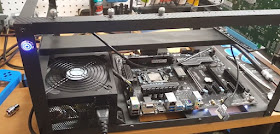I recently came across a new case that really takes it up a step in quality, presentation, and functionality. Meet the NESPi Case for the Raspberry Pi (Amazon Link). It will house a Pi B+, 2, and 3. Aside from a pretty well built case quality wise, it does 3 things that no other case I have seen has been able to achieve, especially at this price point.
1) It has working Power and Reset buttons in the front of the case
2) Working LED indicator when the system is powered on (usually I have to add this via a mod)
3) Reorientation of Port to for a better look and easier cable management
Here is a side by side comparison of some other Pi cases I have to give you a better idea of how large it is. It is a tad bigger than normal Pi cases, but nothing even close to the size of the original NES console which it mimics.
By using a series of breakout boards, all 4 USB are located in the front, 2 in the where you would normally plug in your controllers, and 2x hidden behind the hinged lid along with the Ethernet port. Power and HDMI ports have also been relocated to the back of the unit. Shown here is everything that comes with the case, including the very simple instructions (Rapsberry Pi does not come with the case).
Here you can see where the Pi installs next to the breakout boards.
And again a view from the front showing the USB and Ethernet ports.
Here you can see the functional LED indicator showing the system is powered on.
And here are views from all the sides of the unit.
Overall I am very pleased with this case, and it is now my "go-to" for my personal systems and those I build for friends and family. For a more detailed walkthrough and to see this particular unit in action, check out the video below.
























































